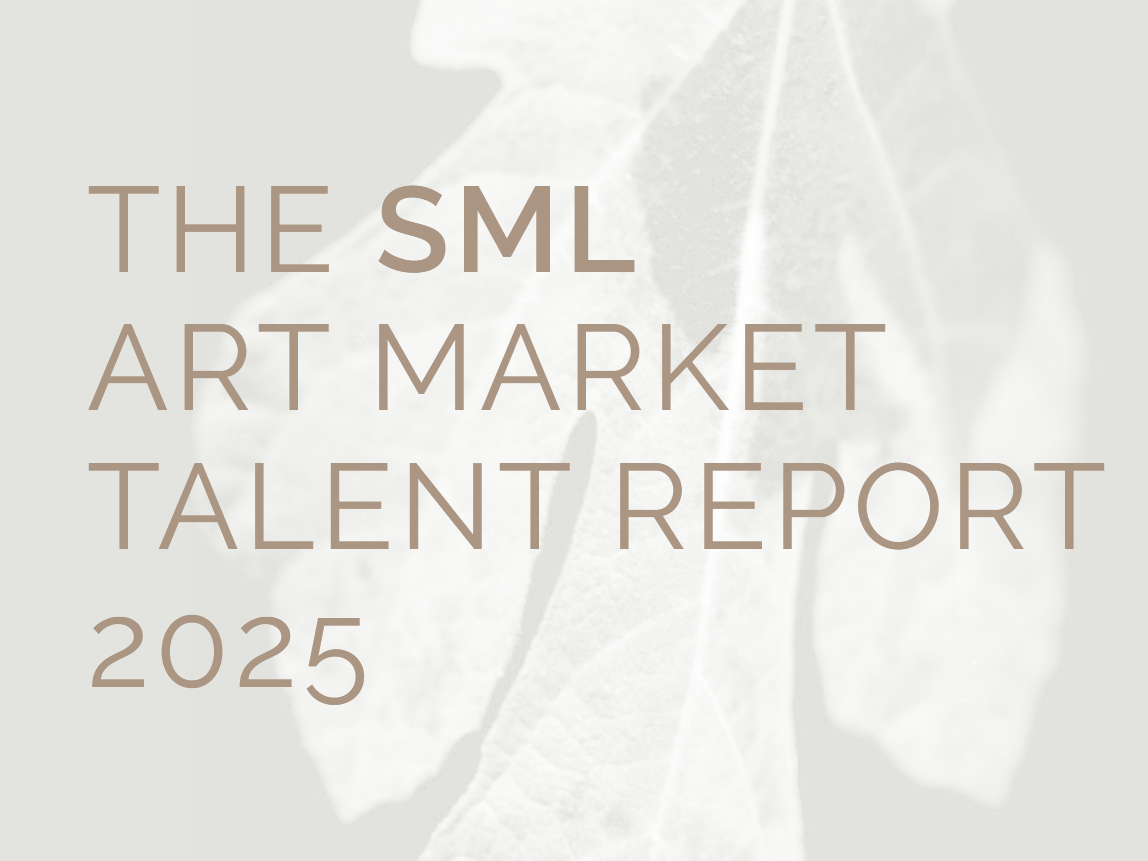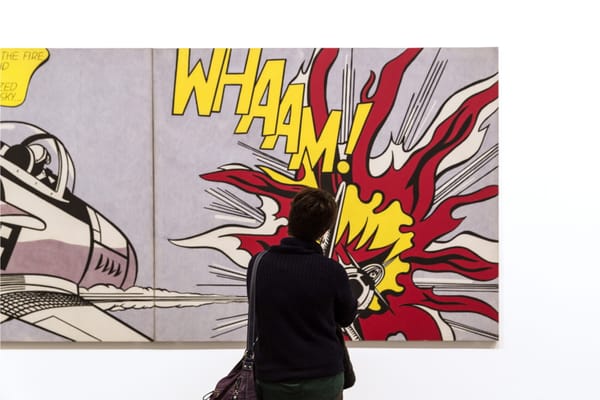SML Art Market Talent Report 2025: Rising Salaries, Sinking Satisfaction—The Art World’s Pay Crisis
The SML Art Market Talent Report 2025 exposes a major pay crisis in the commercial art sector. Salaries are rising, but employee satisfaction is sinking.

SML’s latest findings reveal a harsh reality: while salaries in the UK and Europe have steadily climbed between 2022 and 2024, employee satisfaction with pay has dropped by nearly 20% in both regions. In the United States, where wages declined and then plateaued, the dissatisfaction rate is even worse—plummeting by 25.7%.
The SML Art Market Talent Report 2025 exposes a brutal truth: even as paychecks grow, art world professionals continue to feel undervalued and financially insecure. But the issue isn’t just about numbers—it’s about structural inequities, career stagnation, and employer mismanagement that are pushing experienced talent to look elsewhere or demand radical change.
Why is salary dissatisfaction surging across the industry? And what needs to happen before the art market reaches a breaking point?
1. The Salary Illusion: Why Higher Wages Aren’t Enough
At first glance, the fact that UK salaries have increased from £35,000 to £40,000 and European wages stabilized at €50,000 should be good news. But the reality is stark: rising wages are not keeping pace with inflation, workload increases, and the cost of living. In the US, where salaries have flatlined at $70,000, art professionals are feeling the financial squeeze even harder.
But it’s not just the amount—it’s the perception of what that salary actually delivers. Many professionals in the commercial art market work long hours, face intense pressure, and navigate an unstable job market. A 5-10% raise doesn’t fix those fundamental issues.
“There seems to be a huge disparity between the amount of experience companies are looking for versus what they are willing to pay.” – Survey Respondent, SML Art Market Talent Report 2025
2. Pay Gaps Are Worse Than Ever
While salary stagnation is a universal issue, the pay gap between different demographics is even more alarming. According to the SML report:
- White professionals consistently earn the highest salaries across the UK, US, and Europe.
- Black professionals earn the least in both the UK (£26,000 median salary) and the US ($67,000 median salary).
- Men still out-earn women by 23% in the US and a shocking 60% in Europe.
- PhD holders in the UK and Europe often earn less than those with just a bachelor’s degree, exposing a broken value system in art world hiring.
These discrepancies are not just statistical quirks—they reflect barriers to higher-paying roles, fewer leadership opportunities for minorities, and outdated salary structures that fail to reward merit over connections.
For many professionals, it’s not just about money—it’s about seeing colleagues with similar experience earn more simply because of their background or gender.
“Gender pay equity is an issue.” – SML Survey Respondent
3. Career Stagnation: Why Senior Professionals Are the Most Dissatisfied
While younger employees (in their 20s and early 30s) reported the highest pay satisfaction, those in their 40s and 50s are the most disillusioned.
Why? Because as professionals progress in their careers, they expect their salaries to rise accordingly. Instead, many are seeing their wages stall or even decline while younger hires are brought in at similar pay levels.
The SML report shows that:
- In the US, salaries jump from $65,000 in a professional’s 20s to $95,500 in their 30s—but only increase to $105,000 in their 40s.
- In the UK, salaries rise from £34,000 (20s) to £46,150 (30s) but barely move to £52,000 (40s) and £54,500 (50s).
This stagnation is causing high burnout and turnover among experienced professionals who feel they have hit a dead end. It also explains why so many mid-career professionals are turning to side hustles, consulting, and freelance work just to keep up financially.
4. The Side Hustle Boom: A Sign of Financial Desperation?
One of the clearest indicators of salary dissatisfaction is the explosion of freelance work and side hustles among art professionals. According to the report:
- 54.1% of employees at micro-businesses (fewer than five employees) have a second source of income.
- The trend is growing in the UK and Europe, where side hustle rates jumped from 30.5% to 34.4% and 31.9% to 42.6% respectively.
For many, this isn’t about pursuing passion projects—it’s financial survival. The art world’s failure to offer competitive, stable salaries is forcing professionals to take on extra work just to cover basic living expenses.
This growing reliance on multiple income streams raises major concerns about job security, mental health, and long-term career sustainability.
“It’s a shame the field loses so many passionate individuals for being undervalued and underpaid.” – SML Survey Respondent
What Needs to Change?
The SML Art Market Talent Report 2025 makes one thing clear: the art world’s salary structures are unsustainable. If businesses want to retain top talent, they need to rethink how they compensate and support employees.
Employers need to rethink pay structures. Regular raises should reflect experience, inflation, and workload increases—not just be token adjustments. Pay gaps must also be addressed with real salary transparency and equitable hiring practices, ensuring that underrepresented groups are no longer left behind. Beyond base pay, companies need to offer more than just a slightly higher salary. Employees are demanding better pensions, healthcare, and work-life balance that doesn’t leave them exhausted. Flexible work arrangements, including hybrid and remote options, can help employees maintain financial stability without burning out.
For employees, the time for passive acceptance is over. Negotiating harder is essential. Research salary benchmarks and refuse to accept stagnant wages. Relying solely on a single income stream is increasingly risky. Diversifying income through freelancing, consulting, or moving to higher-paying roles can provide a safety net. Pushing for transparency is equally important. Employers should be held accountable for clear salary bands and equitable pay structures. If career progression is stalled, it may be time to consider roles in adjacent industries that truly value skills and experience.
The Future of Pay in the Art World
The commercial art sector has always been notoriously opaque about pay. But as employee dissatisfaction rises and more professionals seek alternative careers, businesses will be forced to adapt or risk losing top talent.
The question is: will the industry change fast enough? If not, the best and brightest may take their skills—and their creativity—somewhere else.
ART Walkway News





